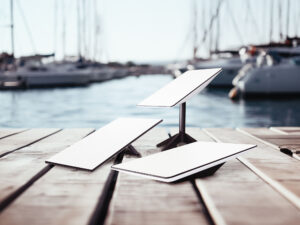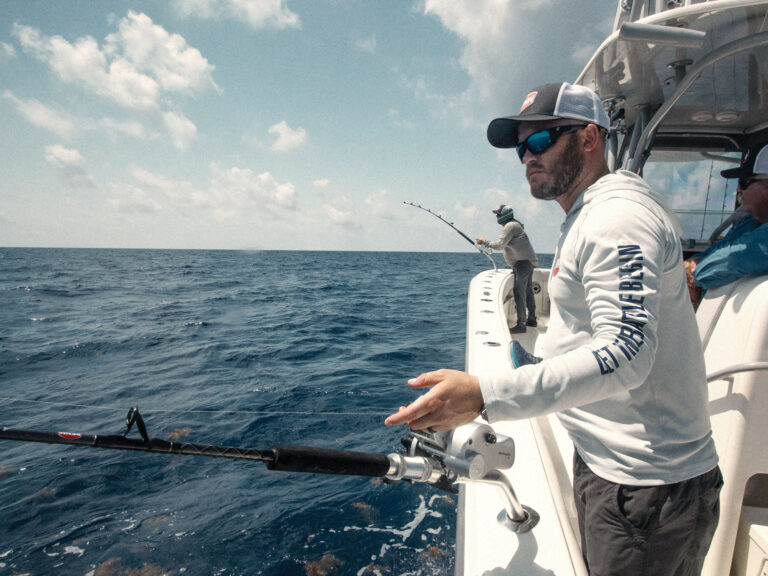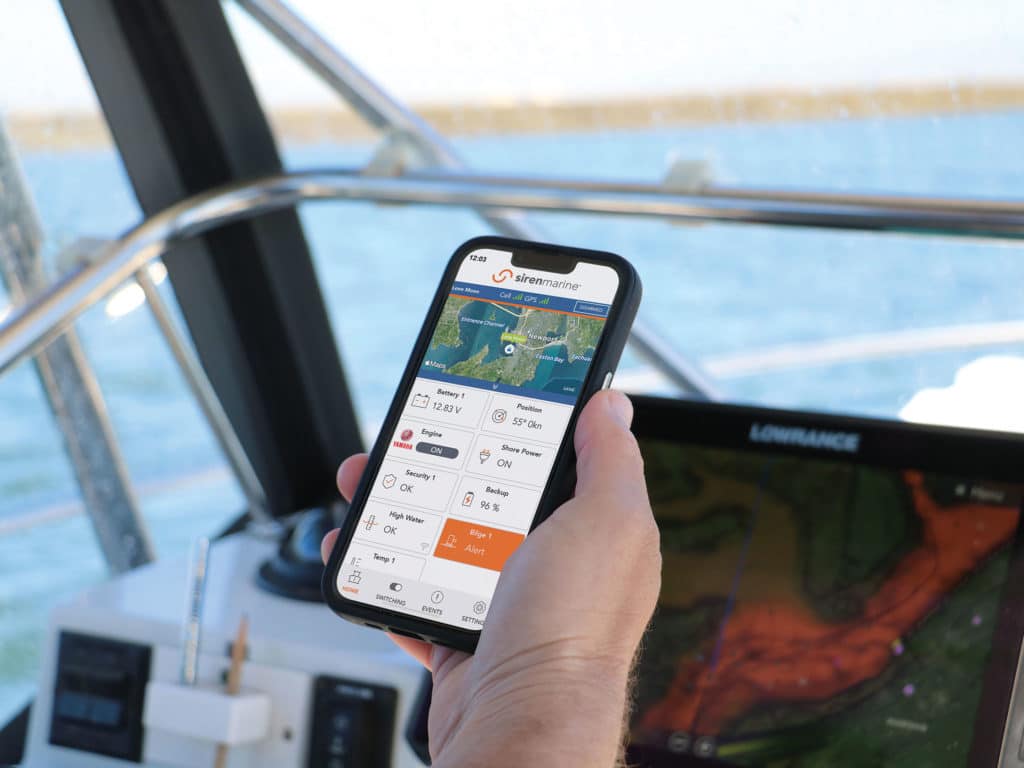
Ben Speciale is a busy man. He’s president of the Yamaha Marine Group Company, which includes one of the world’s largest outboard engine brands, as well as a number of boat factories and marine accessory companies. Yet through the long days of hard work and management decisions, Speciale still finds time to think about his boat. And when he does, he often opens an app that puts him on board (in a virtual sense) any time and from any location.
“At least once a day, whether I’m in the office or on a business trip, I find myself checking the Siren Marine app on my phone to see if everything is OK. It’s very reassuring to know that the batteries are charged, the boat is resting within its geofence, and the bilge is dry,” explains Speciale, who has a Siren 3 Pro Connected Boat system installed on his boat. “After a quick check, I can go back to work with greater peace of mind.”
Growing Market
App-based boat monitoring and switching systems are, like many of today’s technologies, a bit habit-forming. Once you have a system and learn the benefits, you don’t want to be without it.
While the Siren Marine system is a natural choice for Speciale since Yamaha recently bought the company, there are numerous systems available for boaters, including Blue Guard Innovations Smart Skipper, Garmin OnDeck, Nautic Alert X3, Raymarine YachtSense Link, and Yacht Sentinel.
Many of these systems are not just for big boats or big budgets. The onboard devices are often compact and relatively affordable. The IP67 waterproof-rated Siren 3 Pro main device, for example, measures just 6.5 inches wide by 4.5 inches tall by 1.25 inches deep (excluding antennas) and retails for $749.99. Raymarine’s waterproof YachtSense Link is 9.53 inches wide by 6.39 inches tall by 2.48 inches deep (excluding antennas) and retails for $1,299. The Garmin OnDeck is 9.1 inches wide by 5.6 inches tall by 1.9 inches deep (excluding antennas) and retails for $849.99.
Connection Methods
Most systems use cellular signals. “For instance, YachtSense Link taps into the cellular data plan of your choosing (using a SIM card) to connect with the Raymarine app on your mobile device or computer, and it can also serve as an onboard 4G hotspot,” says Jim McGowan, marketing manager for Raymarine.
For the Siren 3 Pro, on the other hand, the company offers its own unlimited 4G/5G data service plans for $180 annually. Monthly, seasonal and multiyear plans are also available.
Cellular is not the only means of connectivity. “YachtSense Link also uses Wi-Fi should a strong signal be available in a marina, for instance. The device switches automatically to the strongest signal,” McGowan points out.
Satellite Link
For those times when you’re fishing outside of cell range, Siren Marine offers the SirenSat Offshore subscription, which connects via satellite. The service costs $300 a year, and must also -include a cellular plan as well as a SirenSat Offshore antenna.
Monitor Vs. Control
To be clear, these systems provide two main forms of functionality. One is remote monitoring; the other, remote switching, allows for control of onboard systems. For example, the Siren 3 Pro in its most basic configuration is a monitoring system that reports on parameters such as the boat’s position (thanks to a built-in GPS), battery status, bilge pump activity, bilge water level, temperature (engine room, cabin or fridge), shore-power connection, or even unauthorized entry.
Updates on these parameters help recognize problems. A recent experience illustrates this. While I was out of town, a check of the app of my Siren remote monitoring system indicated that one of my boat batteries was not responding to the onboard charger. Upon my return, an inspection revealed that corrosion had damaged the charging wires. Once I repaired them, a check of the app indicated that juice was again reaching the battery. That low charge could have ruined the next fishing trip, but it was now good to go.
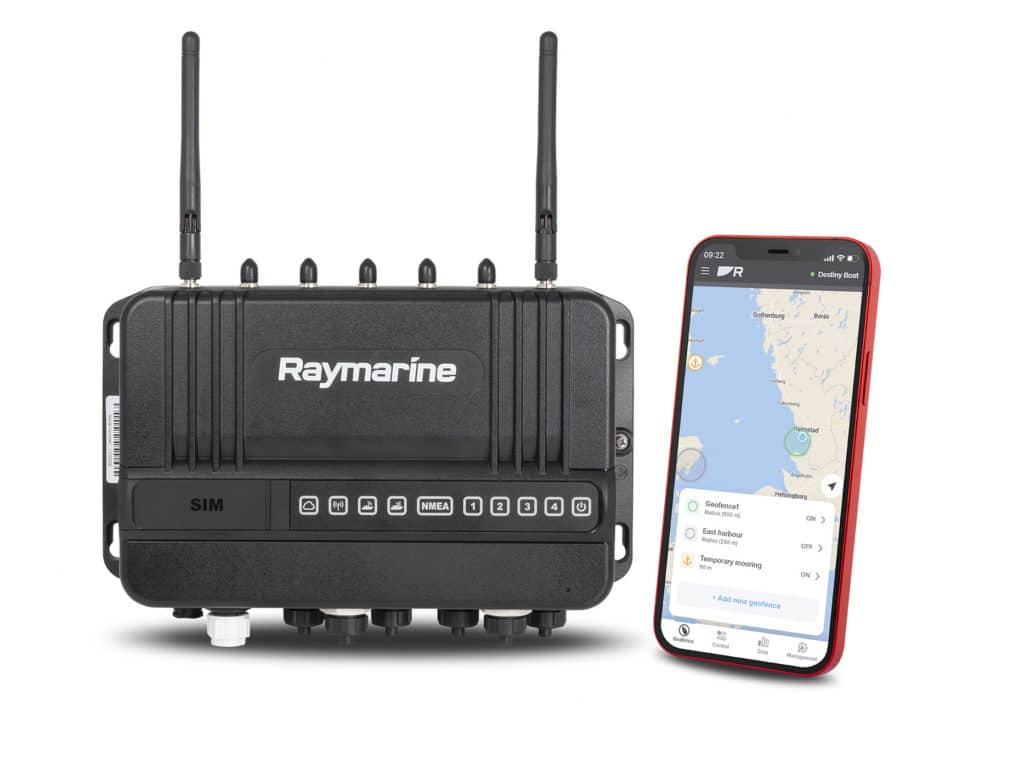
Take Control
App-based connectivity also lets you control onboard systems, like air conditioning, refrigeration, lights, pumps and other devices, so the boat is ready once you step aboard. Raymarine’s YachtSense Link, for example, enables you to use the Raymarine app to switch on and off—as well as monitor—up to four low-voltage marine electrical devices. It also connects to Raymarine’s Axiom multifunction displays to monitor and control via touchscreen.
To expand control and monitoring, Raymarine has developed an onboard ecosystem that integrates YachtSense Link via Ethernet with the company’s highly customizable YachtSense digital switching system. This combination allows for remote control of more devices than with YachtSense Link alone, and also enables app-based switching of higher-voltage accessories. The Raymarine Ecosystem is largely available only as an option on new boats.
The Siren 3 Pro also enables remote switching, but it does so using a NMEA 2000 connection to integrate with digital switching systems from a variety of other brands. It will, for example, integrate with systems such as C-Zone, Garmin Switch and others to offer control of onboard systems via the Siren Marine app. In addition, it can integrate with an MFD to control systems via touchscreen.
As our lives grow more and more hectic, app-based marine monitoring and control systems help ensure that our fishing boats are ready to roll whenever an opening in our busy schedules permits. And ultimately, that’s what life is all about.
Boat Security
All of these systems offer superb security thanks to built-in GPS that pinpoints the boat’s location at all times. You can set a geofence—an invisible perimeter around the boat—that automatically alerts you via the app if your boat leaves this guard zone. Should such an event occur without your permission, you can use the app to track the boat on a satellite map and alert law enforcement. With some brands, this service is built into the subscription fee, while others might require an additional charge to access such capabilities. In either case, Yamaha President Ben Speciale says it’s well worth it, if only for greater peace of mind.
Read Next: Mobile Device Apps for Fishing
New Electronics
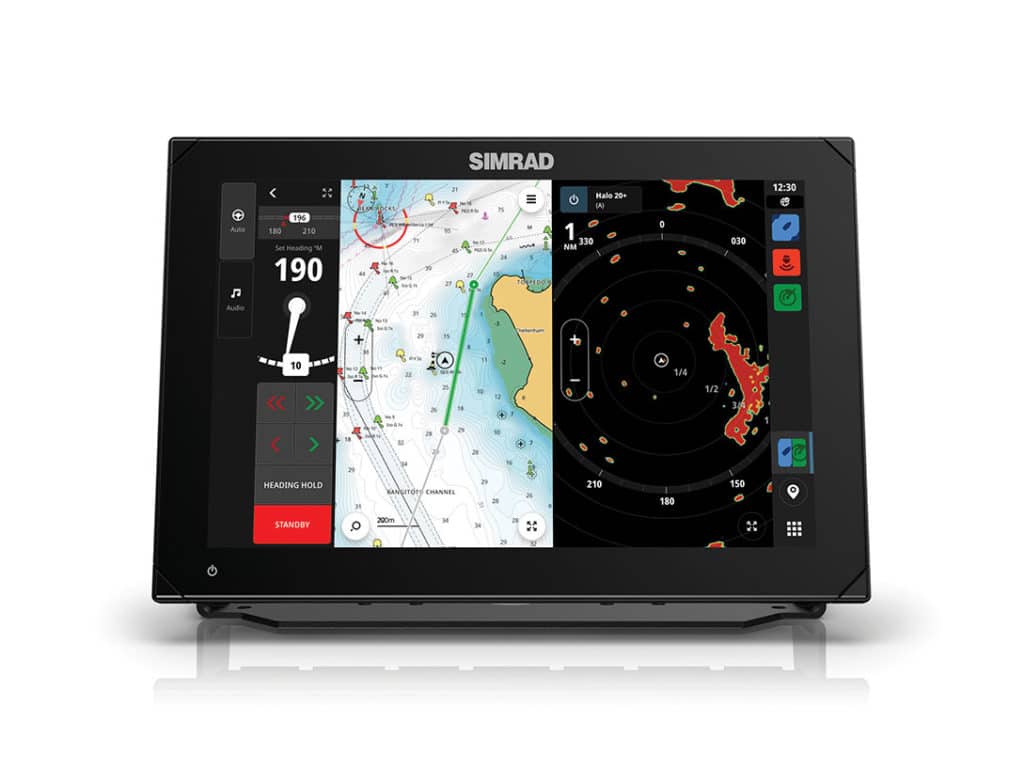
The Simrad NSX MFDs feature an Android operating system enabling additional functionality with a wide range of apps. Available in 7-, 9- and 12-inch touchscreen sizes, NSX includes a Setup Wizard that makes it easier to include displays of engine and tank parameters, optimize the autopilot, calibrate the radar and more. A simple drag-and-drop system edits NSX displays. Starting at $1,049; simrad-yachting.com
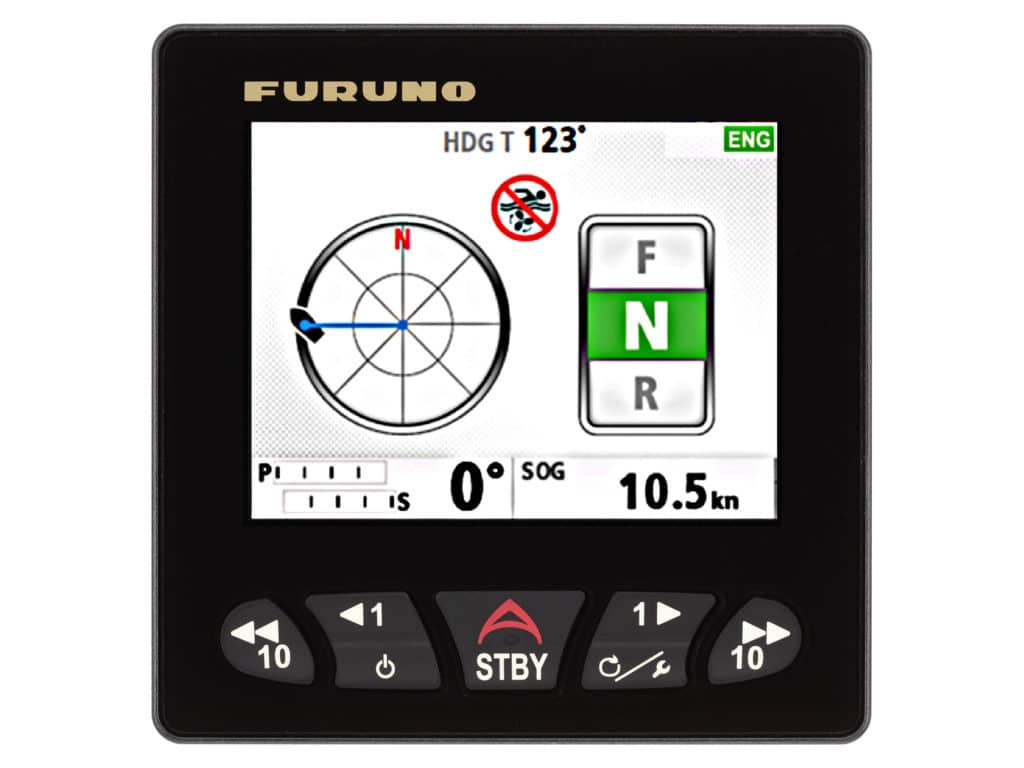
Suzuki and Furuno Fish Hunter Drive
Suzuki Marine teamed with Furuno to develop the Fish Hunter Drive autopilot for new Suzuki drive-by-wire outboards from 115 to 350 hp. Based on the Furuno NavPilot 300, it delivers Speed Control, Point Lock, Route Smoothing and Sabiki Lock. The autopilot electronically manages shift and throttle to maintain boat speed, stop at fishing spots, maintain heading while drifting, or hold position. $1,600 for the NavPilot 300; furunousa.com
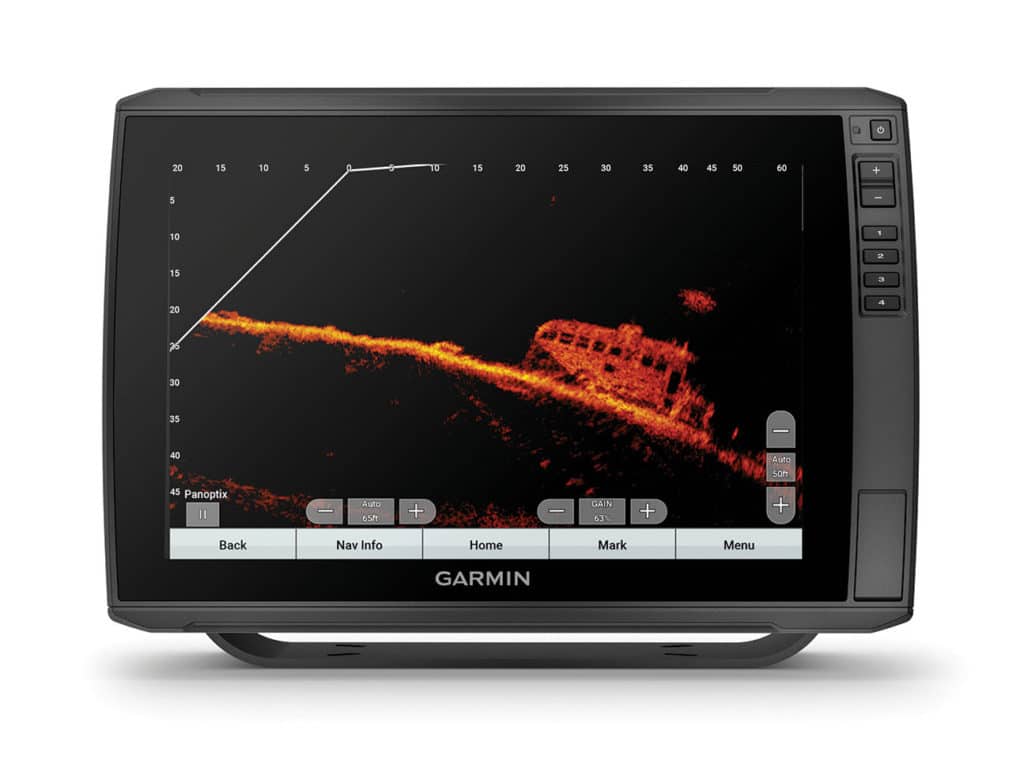
Garmin LiveScope Plus
Garmin’s LiveScope Plus sonar system makes it easier to see bait, fish and structure around the boat in real time in three modes—Forward, Down and Perspective—on compatible Garmin MFDs. Sensors adjust sonar beams to compensate for boat motion, resulting in a steady sonar image. A GLS 10 black box and LVS 34 transducer sell separately. $1,199.99 and $1,699.99, respectively; garmin.com




